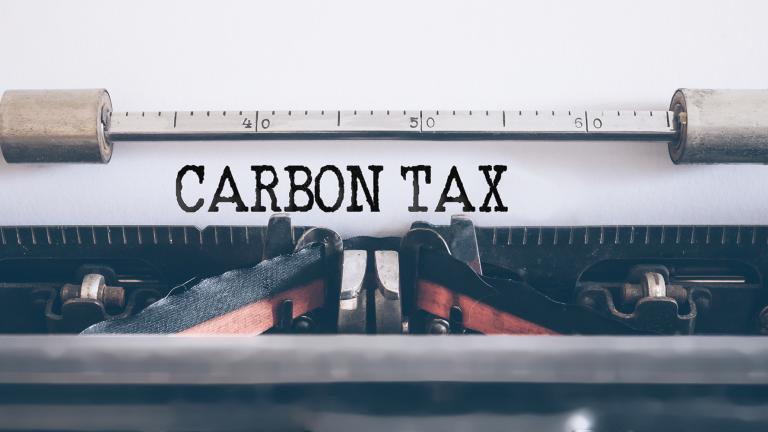
In a new CEEPR Working Paper, Professor Christopher Knittel models the carbon price needed to achieve projected emission reductions under Obama-era vehicle mileage standards, the Clean Power Plan, and a biofuel mandate. He found that a federal carbon price of $7 in 2020 could reduce emissions by the same amount as all of the flagship climate policies adopted by the Obama administration.
“This shows the power of a price on carbon,” says Knittel, who is director of the CEEPR. “As little as a 7-cent price increase per gallon of gasoline and less than half a penny per kWh of electricity could get us the same climate benefits as the fragile, costly, and litigious regulations that represent President Obama’s climate legacy. And let’s not forget that all these regulations are under attack by the current administration.”
In his study, he found that matching the emissions reductions forecast under each regulation would not be enough to get the U.S. on a long-term path to decarbonation. However, a carbon tax that increases over time could reduce emissions by the same amount as all of those regulations combined.
“We’re still only looking at $22 per tonne in 2025 and $36 per tonne in 2030 if we include all major greenhouse gases,” explains Knittel. “If we get really serious about climate policy, the costs will only rise, and the cost-saving potential of carbon pricing will become even more important.”
As decision makers in the U.S. consider policy options to revitalize U.S. climate policy for 2020 and beyond, Knittel says that these results could be a political game changer. “This first effort to model the carbon tax equivalent of alternative climate regulations could help build a consensus around more cost-effective policies. Instead of trying to bring back earlier rules such as the Clean Power Plan, a new administration would do well to focus on one of the many carbon tax proposals introduced on Capitol Hill by both sides of the political aisle.”
He adds, “If we can make a given climate outcome more affordable, then we can also aim higher sooner. And we know that, under all scenarios, we have to drastically increase our efforts to meet the climate challenge.”
Further Reading: CEEPR WP 2019-013
About the Author:
Christopher R. Knittel is the George P. Shultz Professor of Applied Economics at the Sloan School of Management, Director of the Center for Energy and Environmental Policy Research, and Co-Director of the MITEI Low-Carbon Energy Center for Electric Power Systems Research at the Massachusetts Institute of Technology. He joined the faculty at MIT in 2011, having taught previously at UC Davis and Boston University. Professor Knittel received his B.A. in economics and political science from the California State University, Stanislaus in 1994 (summa cum laude), an M.A. in economics from UC Davis in 1996, and a Ph.D. in economics from UC Berkeley in 1999. His research focuses on environmental economics, industrial organization, and applied econometrics. He is a Research Associate at the National Bureau of Economic Research in the Productivity, Industrial Organization, and Energy and Environmental Economics groups. Professor Knittel is an associate editor of the American Economic Journal: Economic Policy, the Journal of Industrial Economics and Journal of Energy Markets. His research has appeared in the American Economic Review, the American Economic Journal, the Review of Economics and Statistics, the Journal of Industrial Economics, the Energy Journal and other academic journals.






